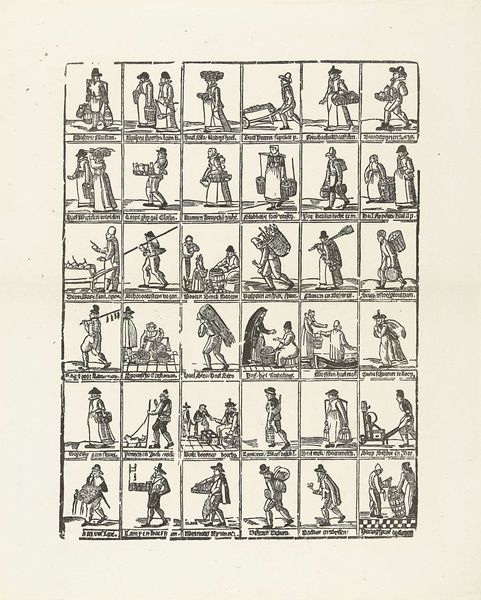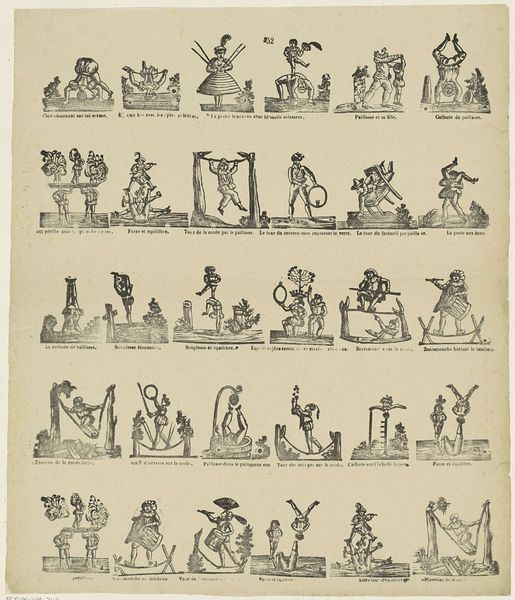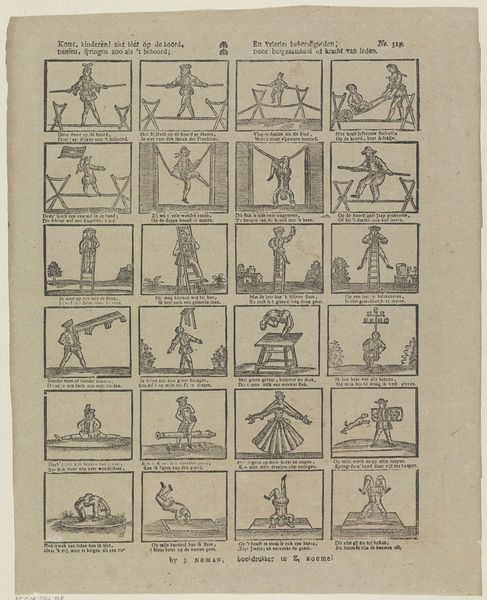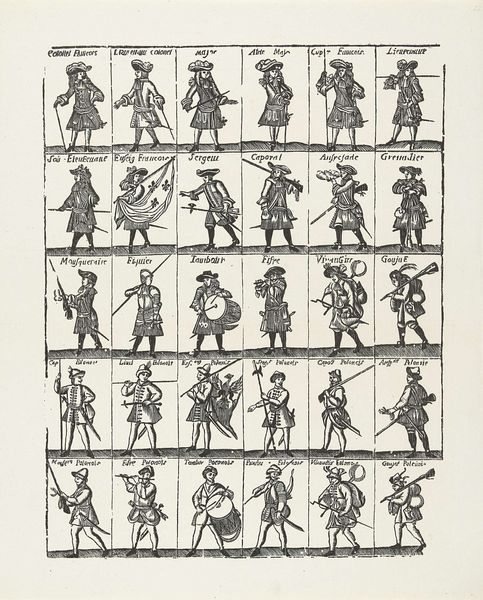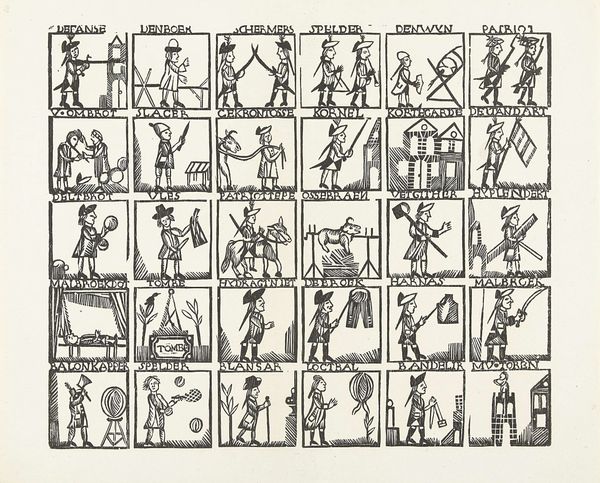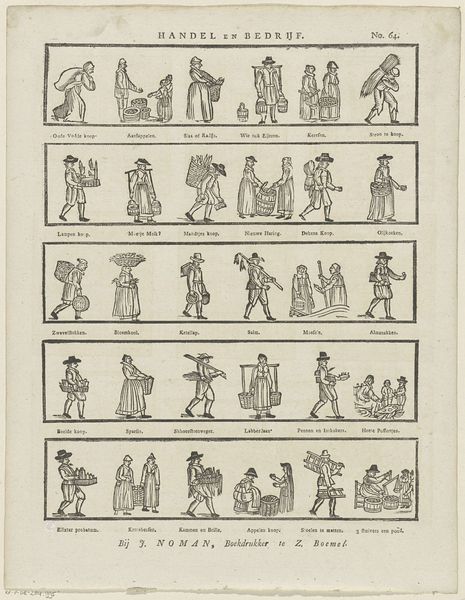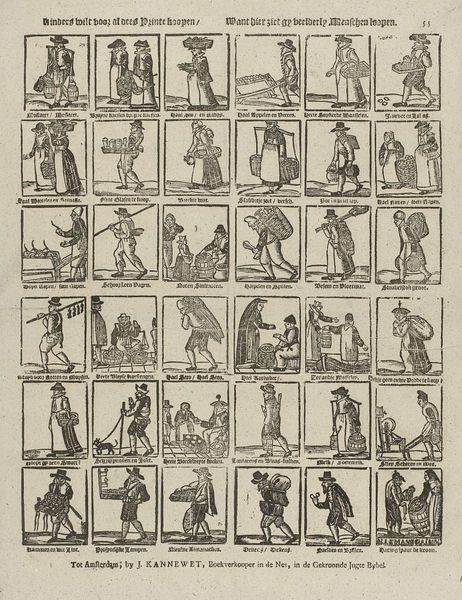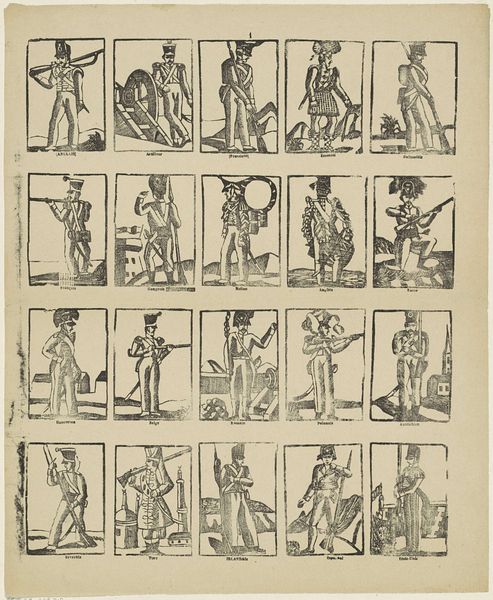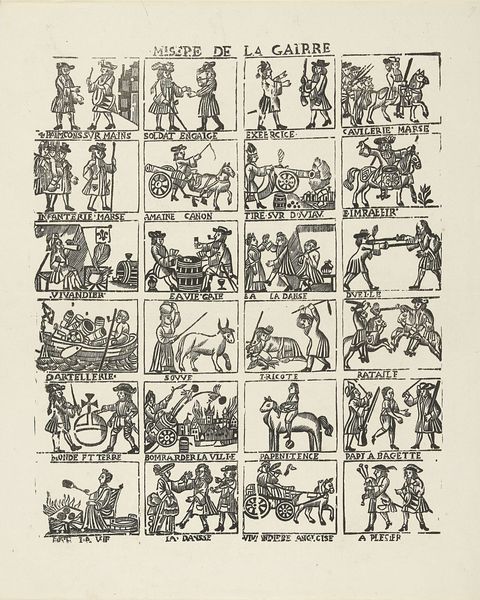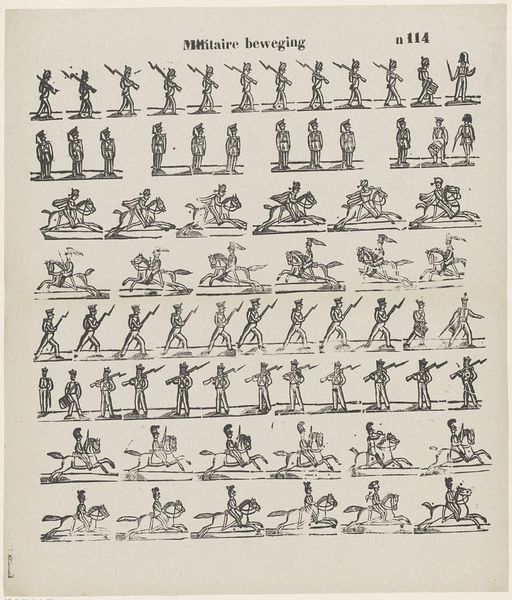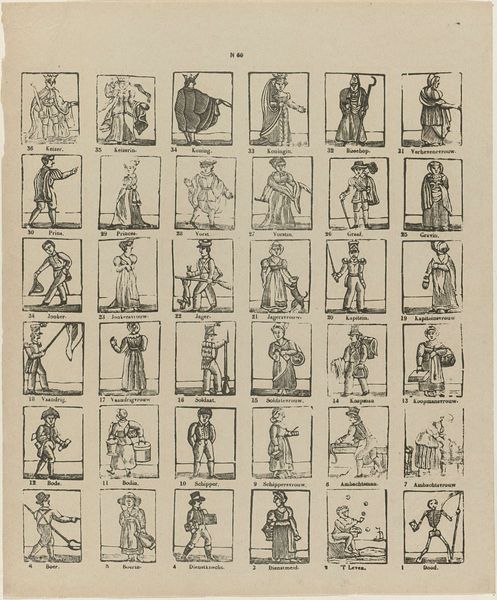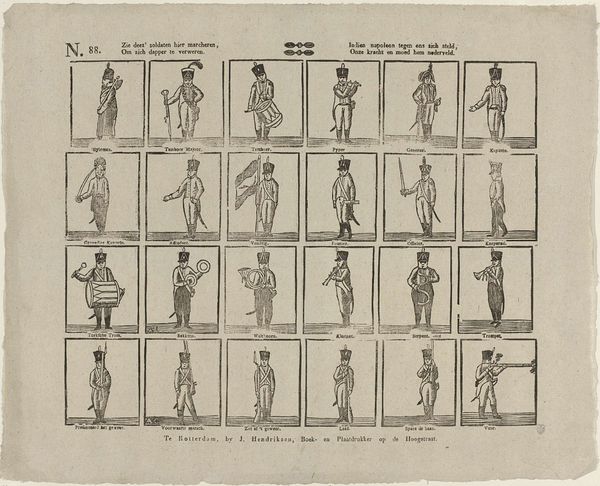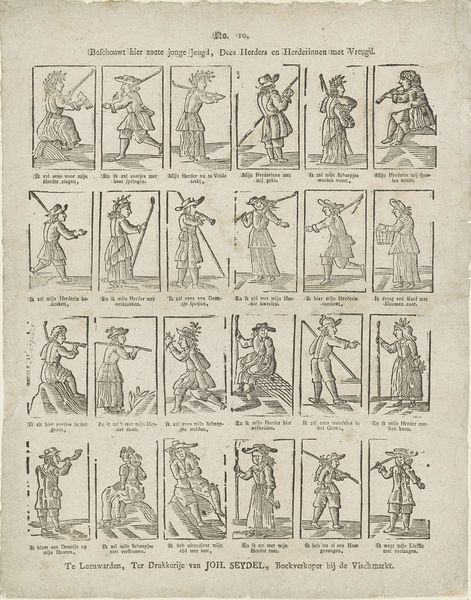
graphic-art, print, engraving
#
graphic-art
#
narrative-art
# print
#
genre-painting
#
engraving
Dimensions: height 447 mm, width 363 mm
Copyright: Rijks Museum: Open Domain
Curator: Looking at this piece, I'm immediately struck by the stark contrast and graphic quality. The figures, each contained within their own frame, seem almost like a storyboard for a performance. What do you think? Editor: Yes, it is very visually striking. This print, titled "Koorddansers," resides here at the Rijksmuseum. While its exact date of creation is uncertain—likely falling somewhere between 1700 and 1865—we know it's a piece of graphic art by van der Haeghen. I am captivated by the repetitive images; each offers a new level of performative production. Curator: 'Performative production' nails it! Given that it’s an engraving, a process demanding skill and time, how might its creation reflect broader socio-economic conditions, say, emerging markets for mass-produced imagery? Editor: Absolutely, engraving involves labor; one must meticulously carve each line into a metal plate, layer after layer, and that labor reveals the whole production: this isn't some quick sketch. Consider that prints like this, reproducible on a modest scale, are entering the domestic sphere more readily, creating an audience consuming visual narratives in new ways. How do the individual panels strike you? Curator: There is a systematic ordering, almost a catalogue of actions and poses... The arrangement suggests the formal structure of a grammar or maybe of choreography notation? Editor: The ordered approach really gives us much to consider from a historical standpoint. Looking at how the performers negotiate the tightrope and the obstacles, literally 'sproingh over oegens' — 'spring over eyes' — we could speculate on the conditions of labor and life more widely during the early industrial age, which led to art for a popular, emergent viewership. Curator: Your point is well taken about this form of distribution into the emergent class. For me it is exciting to reflect on it from its intrinsic composition: the balancing act—the play between light and dark, figure and ground... What might our visitors take away as they move on? Editor: Perhaps an understanding that even seemingly simple images, reproducible prints like this, hold within them complex relationships. Labor, process, composition all interwoven to construct layers of art meaning in historical context.
Comments
No comments
Be the first to comment and join the conversation on the ultimate creative platform.
